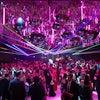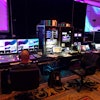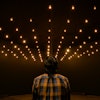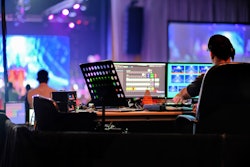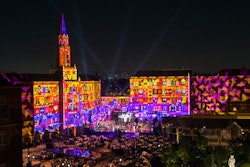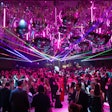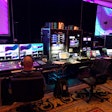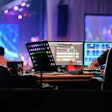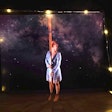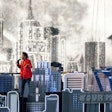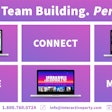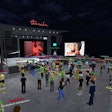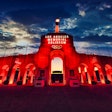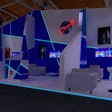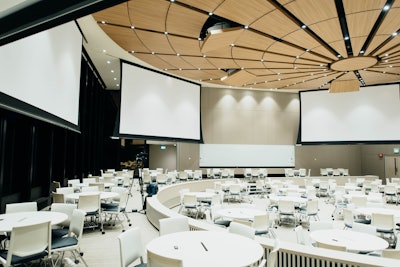
Guest columnist Adam Ogden is the technical director for InSync Production Services, based out of Las Vegas.
Over the last 20 years, the visual presentation portion of a large meeting or general session has become less of a specialty request and more of an absolute necessity. These days, you find that many of the larger general session stages are built around the screen(s) size and viewability.
Long gone are the days of slide projectors and tripod screens. Today's meeting planners want crisp, clean, bright solutions to get their content out to the attendees. During the last 10 years of this technical progression, large-format projection systems have become more affordable, allowing meetings and events to showcase large, bright video displays as part of their meetings and events. Today, LED technology has taken the meetings and events market by storm, filling in many gaps that even the best projection systems cannot avoid. But still, it seems that many meeting and events planners don't know what LED can do for them. Let’s solve that.
Remember when VHS tapes were phased out for DVDs? It seemed like there was much commotion about it. Everyone knew it was happening, and everyone had an opinion about it. And then, when the last VCR was made on the assembly line (surprisingly, as late as 2016), that was the end of the VHS tape. Fast forward a few years, and we found ourselves with fewer and fewer DVDs, too.
Now, almost everything is streamed, stored on "the cloud" or someone has their entire 5,000-movie personal collection on a postcard-size portable hard drive. It seems the DVD is disappearing (and thus, ushering in the newer technology) with a lot less fuss than the VHS-to-DVD transition. I think the same is happening in the world of video projection and LED. We've all seen LED signs outside a business, along highways or as digital signage in airports. But how can it be used effectively in meetings and corporate events? What are the benefits? Is the cost worth the effort? Why should LED be the "new norm?"
Video Projection vs. LED Walls
Projector/screen combinations have been used in meetings for years now. And since we are focusing on the larger, general session-type meetings for this article, we will leave the breakout-size setups alone for now. Large-format projectors come in all kinds of sizes (read: brightness levels) and can be used with projection screens of all sizes, either from the front of the room (utilizing front projection techniques) or shot from backstage (rear projection).
Although tried and true, there are quite a few limitations with these projection systems—the first being projector placement. If you've ever had to design a meeting room around rear projection, you know you can sometimes lose as much as 30 feet or more of your room to backstage space for the projector throw. If it's out front, you either have to hang it (which puts all that fan noise right above the ears of your audience) or put truss towers in the back of the room, which doesn't always look as clean as you'd like.
Then you have the issue of lighting. You almost always have to dim the house lights so you can see the screen, and if you have stage lighting, you have to work very hard to make sure it doesn't wash out the screen. And what if someone walks between the projector and screen? You have a cookie-cutter silhouette of the speaker on the screen. It's not show-stopping, but it's certainly not polished and professional.
The last thing that projection doesn't do is offer you an almost infinite number of sizes and shapes for your display. Ninety-nine percent of the screens you rent are a standard 16:9 aspect ratio. That means you’re locked into that ratio, and the ability to create custom content with different sizes and shapes is almost eliminated, unless you have screens or projection surfaces custom made, but that's when the money starts fluttering right out the door.
LED walls can fix almost all of these issues and add enhancements that you simply cannot do with projection. First, depending on how an LED wall is mounted, it can potentially take zero backstage space when rigged. If they’re ground-supported, they can take as little as 5 to 8 feet behind the screen, depending on the wall's size. That gives you more flexibility on setting up a room when you get all of that floor space back—not to mention no unsightly truss towers in the back of the room. Then, there are multiple benefits when it comes to lighting.
Fun fact: When LED walls are used indoors for meetings and events, they are usually only operated around 20% to 30% brightness because of how powerful they are. This means house lights, stage lights and walking silhouettes are now a non-issue. These screens can outshine anything, which means you can incorporate them into more scenic and stage designs without worrying about the image getting washed out. Lastly, LED walls are modular, which means you can build them in any shape or size you want—meaning the tedious 16:9 constraints are a thing of the past.
Why LED?
So, when is projection the better option? Most people would immediately assume that the cost sets LED and projection apart, but the price point of LED has become so affordable that the two technologies' margin is not as large as you'd think. And when you weigh in all of the extra features and benefits that LED affords you, it becomes a wash (no pun intended).
The most significant setback you’re going to deal with in the LED realm is the weight. LED walls, especially large ones, can be pretty heavy. So, if you don't have a rigging structure or a sturdy stage deck that can handle the weight, you're better off with your projectors and screens. Secondly, you need a little time on your side with LED. It takes longer to get them built, wired up and running because of their modular design. So, if you are on a tight schedule for load-in (or out), you'll need to consider that when scheduling.
Though projectors and screens are not going the way of the DVD (yet), as LED technology gets cheaper and more production companies add it to their inventory, you will see the use of projection technology quietly dissolve. LED technology isn't bleeding-edge technology, even in the world of corporate AV; it is tried and true. And whether your general session is in a hybrid meeting room that has 12-foot ceilings or an arena, LED can serve its purpose well anywhere you put it.
